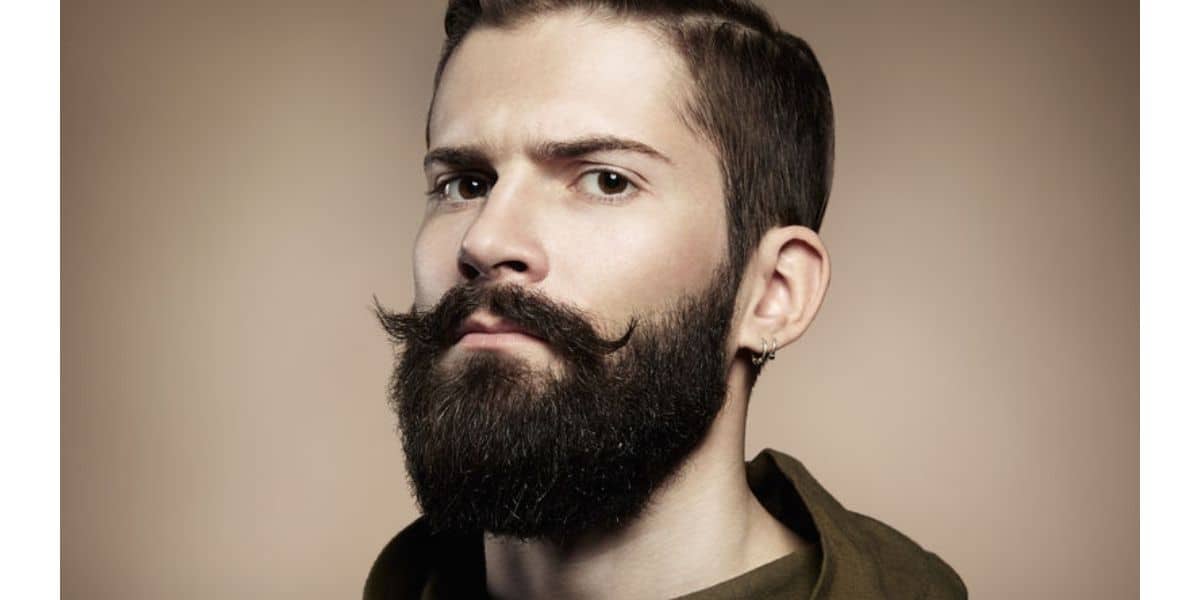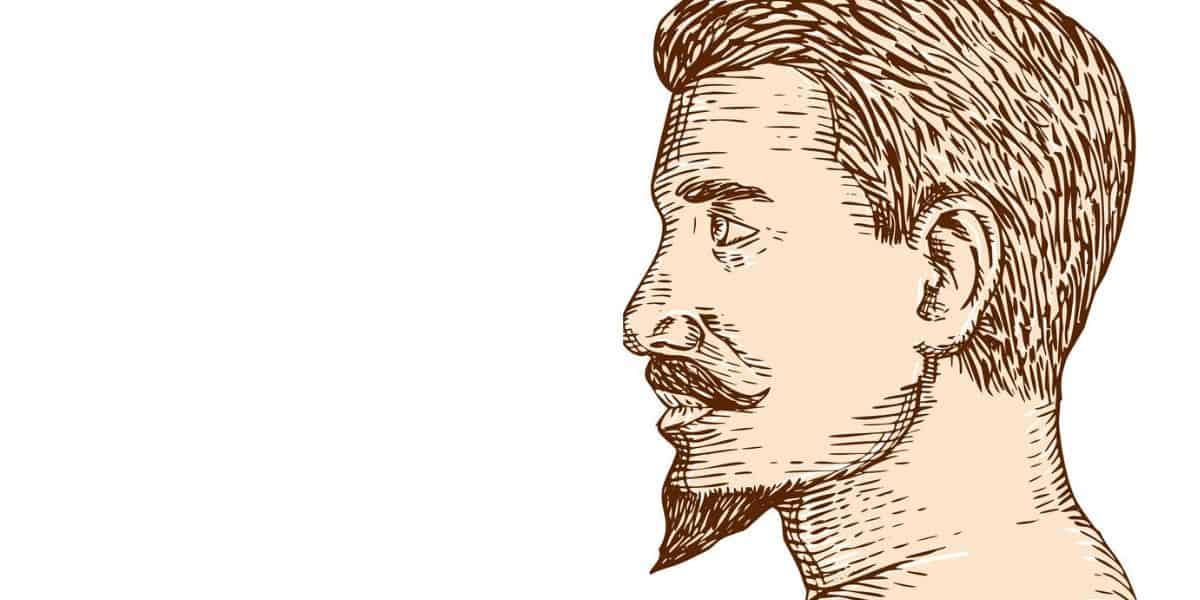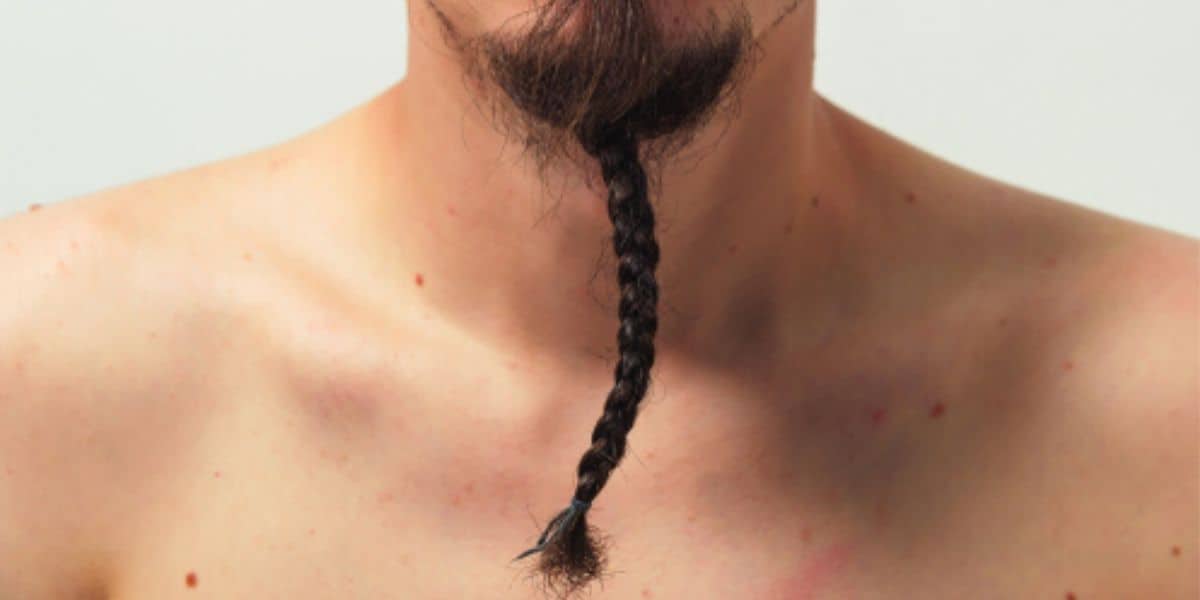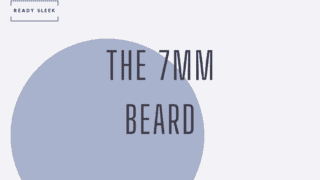I call it the “beard on the border”.
Why?
Because it’s a length that lies on the border between “heavy stubble” and a “short beard”.
The number 2 beard is the shortest “short beard” you could grow. This has its benefits, as well as its cautions.
You’re about to learn everything you need to know about it.
How long it takes to grow, some awesome styles, and some essential grooming tips to finish off with.
Let’s get to it.
How Long Is The Number 2 Beard?
The number 2 beard is 6mm long.
Here’s why.
“Number 2” refers to the fact that a clipper grade of #2 has been used to trim it down. A #2 clipper guard will trim down to approximately 6mm in length.
Simple.
This grading system is far more commonly used to refer to hair lengths. “#2 on the sides with a scissor cut on top”, for instance.
But there’s no reason why it can’t be used to label beard lengths as well.
It has a ring to it, right?
A “number 2 beard” just sounds a little more interesting and less clinical than a “6mm beard”.
How you choose to refer to it is down to personal preference. Just know that they’re exactly the same thing.
A common mistake aspiring beardsmen make early on in their journey is to confuse clipper grades with the number of millimeters they trim down to.
For example, they’ll think that a #2 clipper guard will trim down to 2mm.
It’s definitely worth getting to grips with the grading system and knowing exactly how short each clipper guard will trim down to.
How Long Does A Number 2 Beard Take To Grow?
Around 12 to 14 days.
What I mean by this is that it would take you approximately 12 to 14 days to grow 6mm worth of facial hair, assuming you were starting from a clean-shaven face.
It’s important to realize that it’s difficult to give precise or accurate measurements when it comes to facial hair growth.
Men vary a lot when it comes to the rate of growth. Some men will grow it faster, while others will grow it slower.
But in general, 12 to 14 days is a pretty good estimate for the average man.
Having said this, it isn’t of much use.
Considering you’ll almost definitely be trimming down to a number 2, you’ll want to exceed the number 2 length (6mm) first.
In other words, you’ll want to make sure you’ve got enough facial hair to trim down in the first place.
So, to be safe, grow your facial hair out for around 18 to 20 days before clipping down to a number 2 beard.
If you find that the guard simply isn’t catching any of the hair, just give it a couple of days more.
5 Great Number 2 Beard Styles
Now that you’ve learned a couple of the specific details, let’s take a look at some fantastic styles you could try with a number 2 beard length.
1. The Classic Number 2 Beard
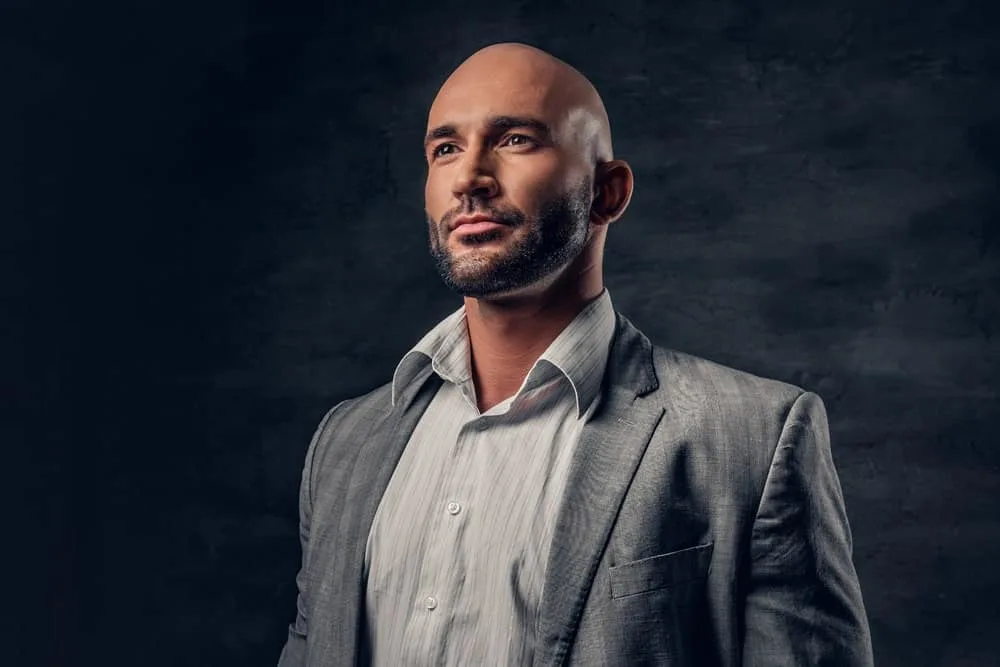
A classic short beard is one where there’s hair on the chin, cheeks, and mustache. Nothing fancy, but boy is it effective.
Its beauty lies in its simplicity.
No intricate sculpting necessary.
Having said this, some maintenance is definitely required.
I’ll be talking more about maintenance tips toward the end, but the main thing to note with a classic short beard such as this is that the borders definitely need to be well-defined.
By borders, I mean the cheek lines and the neckline.
A number 2 length is long enough to be untidy and scruffy, particularly when it’s crawling across your neck toward your chest.
Define the neckline and shave everything beneath it. A well-defined neckline on a short beard can really define the jawline. Make the most of this benefit.
A “fuller” beard style such as this would work well for men with longer face shapes or more angular features. In contrast, men with rounder faces might feel that it adds a sense of fullness that they’d rather avoid.
A classic beard such as this is also a good option if you’ve got decent growth on the cheeks.
Patchy cheeks are a problem for a lot of men, so a beard such as this where they’re on full show may not be the best option.
A goatee may well be the solution.
2. The Full Goatee
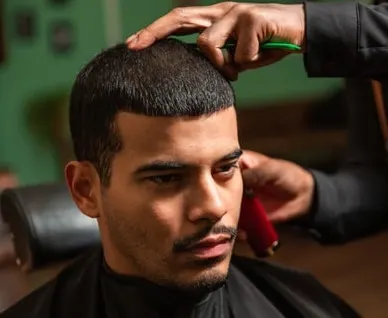
Goatees are great.
They’re defined by the absence of hair on the cheeks and the presence of hair on the chin. There may or may not be a mustache.
As I mentioned, if you’ve got patchy cheek hair, goatees are golden. They completely remove the need for cheek hair and shave it all off in any case.
With a number 2 beard length, patchiness can start to become a problem.
As the hair grows out of the “stubble phase” and into “short beard territory”, the differences in length between the beard hairs become more obvious.
You’ve got shorter hairs next to longer hairs and this difference makes it look patchier.
Cheek hair is notoriously patchy, particularly in early, awkward phases. Chin hair and mustache hair is usually a little thicker.
The beauty of a goatee is that it gives prominence to the typically thicker parts of the facial hair while removing the typically patchy parts.
The picture above is of a Full Goatee. The chin beard and mustache are connected, encircling the mouth.
You could also call it an “Extended Goatee” because the bottom edges of the goatee extend up the lower jawline just a little.
But either way, as you can see, the neck hair has been shaved clean just as the cheek hair has been.
This gives the goatee all of the focus and makes it look very defined.
3. The Goatee With Chinstrap

Here’s another goatee variant you can style with this facial hair length.
So, you’ve got the Full Goatee I described earlier, with hair encircling the mouth.
But you’ve also got a strip of hair that runs along the entire length of the lower jawline, from ear-to-ear.
This is called a chinstrap.
You’ve probably seen chinstrap beards now and again. They aren’t as popular as goatees, but they’re definitely up there.
A goatee can be combined with a chinstrap very effectively. It often looks impressive, simply because it combines the best of both worlds.
It has the universal appeal of a goatee, with the additional benefits a chinstrap brings. The main benefit I’m talking about is the definition it gives the lower jawline.
The maintenance requirements are a little more intensive, as there’s more shaping and sculpting to be done.
The chinstrap needs to be well-defined and an appropriate width. It’s down to personal preference, as they can be as thin or as thick as you like.
It’s something to experiment with.
As a side note, as you can see, a beard length such as this goes great with long hair on top.
Long beards combined with long hair can sometimes come across as too much hair overall.
The number 2 length gives the overall aesthetic a layer of masculinity without being overbearing.
4. The Short Boxed Beard
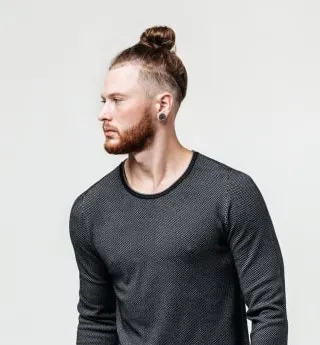
It can be hard to differentiate a Short Boxed Beard such as this from a classic short beard like the one you saw earlier.
But the difference lies in the cheek lines.
It’s subtle but important.
The cheek lines are lowered with a short boxed beard. Not much, but just enough to give the cheekbones that extra bit of attention.
It’s an option for those men who would rather remove some of that cheek hair but don’t want to commit to a goatee.
The maintenance is simpler and not as intricate as it might be with a goatee.
You still need to make sure that the curvature of the cheek line lines up well with the sideburns, however.
Overall, it’s a simple way to add a bit of contouring and definition to a simpler and more basic beard style.
5. The Goatee With Stubble
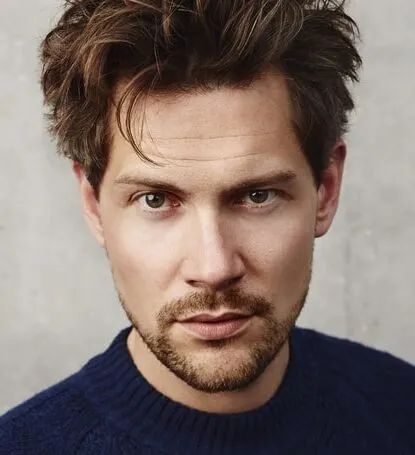
I saved this one till now because it can be a little confusing at first.
Let’s break it down.
So, you’ve clearly got hair on the cheeks. Can it really be called a goatee? After all, a “goatee” is defined by hair being on the chin but not on the cheeks.
Well, you can – sort of.
Yes, there’s hair on the cheeks, but it’s much shorter than the hair in the goatee area.
The hair encircling the mouth (mustache and chin beard) is clearly longer than the cheeks which have been trimmed down to medium stubble.
This difference in length between the traditional goatee area and the cheeks makes it possible for you to label this a goatee variant.
Although the name is up for debate, I like to call it a goatee with stubble.
So, what you could do is maintain the goatee area at a number 2 length, while trimming the cheeks down to stubble. A number 1 guard could work well for this (3mm).
It’s a great option for those who want to enjoy the benefits of a goatee, but don’t want to commit to shaving their cheeks.
Some men just hate shaving and others just like the look of cheek hair and don’t want to let it go completely.
This difference in length also just draws attention. It looks interesting and catches the eye. It’s a relatively simple way to make the facial hair a little more unique.
Yes, the trimming skills required are a little more intermediate level, but it isn’t difficult.
Definitely one to try if you’re looking for a change.
Number 2 Beard Grooming Tips
You could say that attaching that guard and trimming it all down was the easy part. Here are some tips to help you take it to the next level.
- Use beard oil. Yes, it’s long enough to benefit from it. It’ll moisturize the facial hair, make it feel softer, and give it a nice, healthy sheen.
- Keep the neckline and cheek lines well-defined at all times. Shave everything outside these borders (above the cheek lines and below the neckline).
- Be sure to moisturize, particularly over any areas you’ve chosen to shave. Irritated skin can ruin the look of any facial hair, no matter how long.
- Consider varying the length a little. This will be tricky with a clipper because the length increments are bigger. You’ll want a beard trimmer or stubble trimmer that’ll allow you to trim the thickest areas 0.5-1mm shorter once you’re done trimming it all down with a number 2 guard. This shorter length would be around 5mm. It’ll make the whole beard look more evenly distributed overall.
- It probably isn’t quite long enough to benefit from a boar bristle beard brush. Don’t waste your time. Wait until you’ve got at least 3-4 weeks of growth (if you wanted to grow it out this long in the first place).
Conclusion
There you have it – hopefully, everything you could possibly want to know about this very specific, yet glorious length of facial hair.
Use it as a guide and experiment regularly. It’s a very versatile length indeed.
It’s a masculine beard length while still retaining a lot of the benefits that heavy stubble had.
Enjoy.
Ready Sleek founder. Obsessed with casual style and the minimalist approach to building a highly functional wardrobe. Also a fan of classic, vintage hairstyles.


